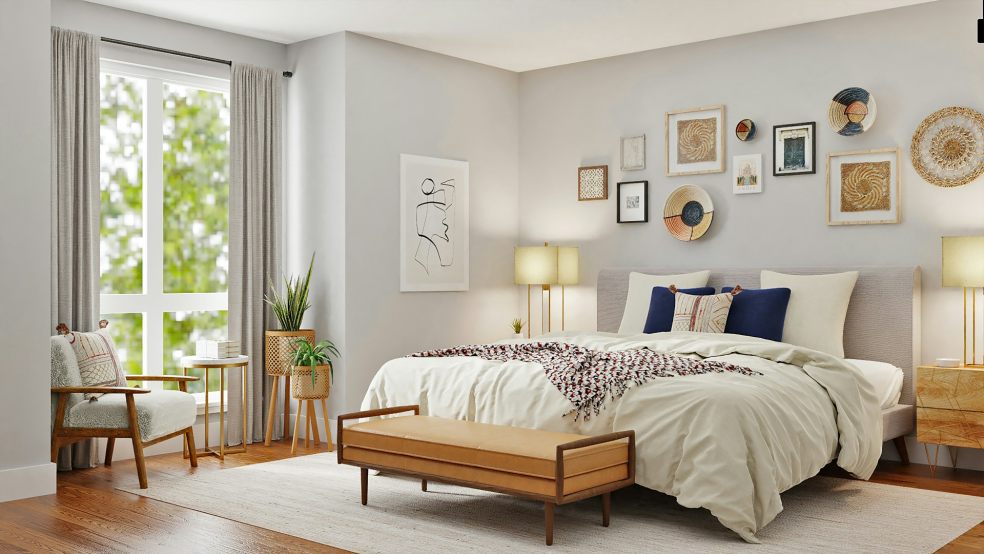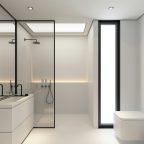
Common Bedroom Layout Mistakes that Disrupt Sleep
Creating a restful bedroom isn’t just about style or mattress quality. Layout choices significantly influence how well you sleep. Poor furniture placement can subtly increase stress, reduce comfort, and interfere with your body’s ability to relax. Without realising it, many people create spaces that hinder rest rather than promote it. This guide highlights common layout mistakes and how to avoid them.
How Layout Impacts Sleep
A relaxing bedroom layout should promote comfort, calmness, and clear movement through the space. Cramped walkways, unbalanced furniture placement, or awkward angles can all create a sense of unease. When your environment feels off, your brain stays alert, making sleep more difficult.
Designing for sleep means thinking practically. Arrange furniture to allow easy access around the bed, keep bulky items away from visual focus points, and ensure your sleep area feels grounded and uncluttered. These elements support a peaceful transition from waking hours to restful sleep.
If you're unsure how to optimise your bedroom’s layout, visiting the Bed Store Mattress Factory Outlet, in person or online, can offer inspiration through varied setups and space-saving solutions. Seeing how pieces work together in person often helps visualise your room more clearly.
Bed Positioning That Hinders Rest
One of the most impactful layout decisions is where you place your bed. Many people push beds against shared walls, such as those adjacent to living areas or other bedrooms. This can introduce noise disturbances during the night. Likewise, beds directly under windows may expose you to drafts and light, which interrupt your sleep cycle.
Another common mistake is positioning the bed in line with the bedroom door. This placement can cause low-level anxiety, especially at night, as the entrance is a vulnerable and visible spot. Ideally, the bed should sit against a solid wall and offer a view of the door from a diagonal or offset position.
For help choosing suitable frames and sizes that fit your space properly, search for a “bed shop near me” to explore layout-friendly solutions suited to your room dimensions.
Door Visibility and Restfulness
Beds that face away from the door often reduce a person’s sense of safety while sleeping. Being able to see the entrance promotes relaxation and lets you monitor movement subconsciously. But direct alignment with the door isn’t ideal either, as it creates a sense of exposure.
The best approach is to position the bed so that the door is visible but not centred in your field of vision. If this isn’t possible, simple barriers like decorative screens, tall plants, or a footboard can create a softer division while keeping the space open.
This minor change can make a notable difference in how settled the bedroom feels, especially during nighttime.
Lighting Layout That Interrupts Sleep
Lighting is often overlooked in bedroom design. Overhead lights placed directly above the bed create unflattering and intense shadows. This brightness can interfere with your ability to wind down. Ceiling fixtures should be positioned centrally or away from the bed for better comfort.
Bedside lamps should also be selected with care. Lights that are too high or cast wide shadows across the bed can feel harsh. The ideal setup uses low-wattage, warm-toned bulbs with downward shades to support relaxation and evening reading.
Controlling natural light is also essential. Early morning sunlight can wake you prematurely. Opt for blackout curtains or adjustable blinds that help manage brightness throughout the year.
Smart lighting features such as dimming schedules or low-glow evening settings can enhance your wind-down routine and prepare your body for better rest.
Storage Mistakes That Increase Stress
Clutter plays a surprising role in poor sleep. Messy surfaces, overflowing drawers, and open storage create visual tension that stimulates the mind. A calm environment relies on clean lines and simplicity.
Nightstands often become overloaded. Stick to essentials: a lamp, water, and one or two personal items. Avoid making this space a catch-all for gadgets, books, or clutter.
Though convenient, under-bed storage can collect dust and contribute to respiratory issues. If used, opt for sealed containers to keep things organised and protected. Larger storage units like wardrobes should have solid doors to minimise visual distractions.
For furniture that balances function and aesthetics, checking options at nearby mattress stores can help you find designs that support a calmer, cleaner space.
Poor Wardrobe Placement
Wardrobes placed directly opposite the bed or with mirrored doors can create a sense of unease. Their reflective surfaces and imposing size can dominate the room and affect how restful it feels. When lying in bed, the view should feel peaceful, not cluttered or overbearing.
If possible, place wardrobes along a side wall or away from direct sightlines. Consider room dividers for small bedrooms or studio flats to separate storage areas from the sleeping zone.
If layout flexibility is limited, choosing non-reflective finishes or adding fabric panels to wardrobes can reduce their impact on the room’s atmosphere. For those in need of practical ideas, visiting bed stores near you is a useful way to explore different options.
Tech That Interrupts Rest
Electronic devices are part of most modern bedrooms, but poor placement can disrupt sleep. TVs facing the bed draw attention and stimulate the brain, especially if used late in the evening. Phones and tablets near pillows contribute to this problem through exposure to blue light and alerting content.
Keep screens out of reach where possible. If you use an alarm clock, turn the display away to avoid checking it frequently during the night.
Charging stations, speakers, and other electronics should be kept tidy and at a distance. Reducing technology use in the bedroom reinforces the association between this space and rest, not entertainment or work.
Some people create boundaries by leaving devices outside the room altogether. This practice helps maintain a tech-free sleep zone and builds healthier evening habits.
Final Thoughts
A well-arranged bedroom can significantly improve how you sleep each night. From where your bed is placed to how your lighting is arranged, small layout decisions influence your comfort and peace of mind. Avoiding common mistakes, like placing beds under windows, overloading nightstands, or keeping electronics too close, makes it easier to unwind and rest deeply.
Whether you’re redecorating or making a few simple changes, focus on ease of movement, clean sightlines, and a calming layout. To help you choose the right furniture or layout-friendly beds, explore local options to find what suits your space best. With a bit of planning, your bedroom can become the retreat it’s meant to be.













